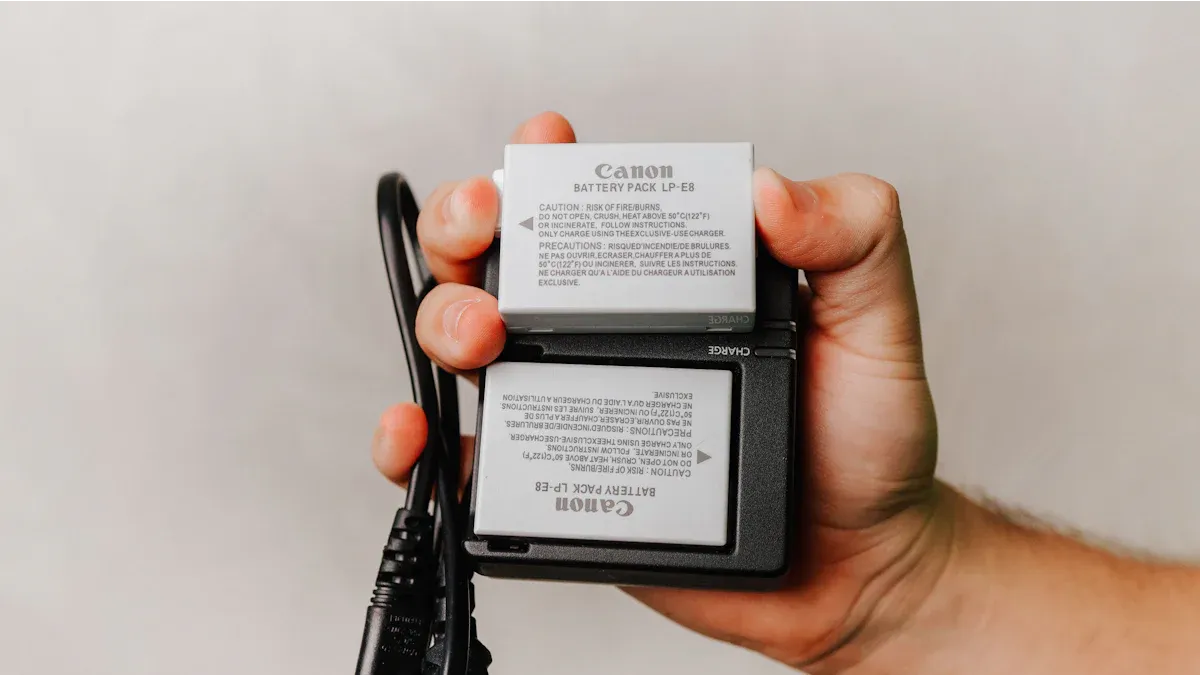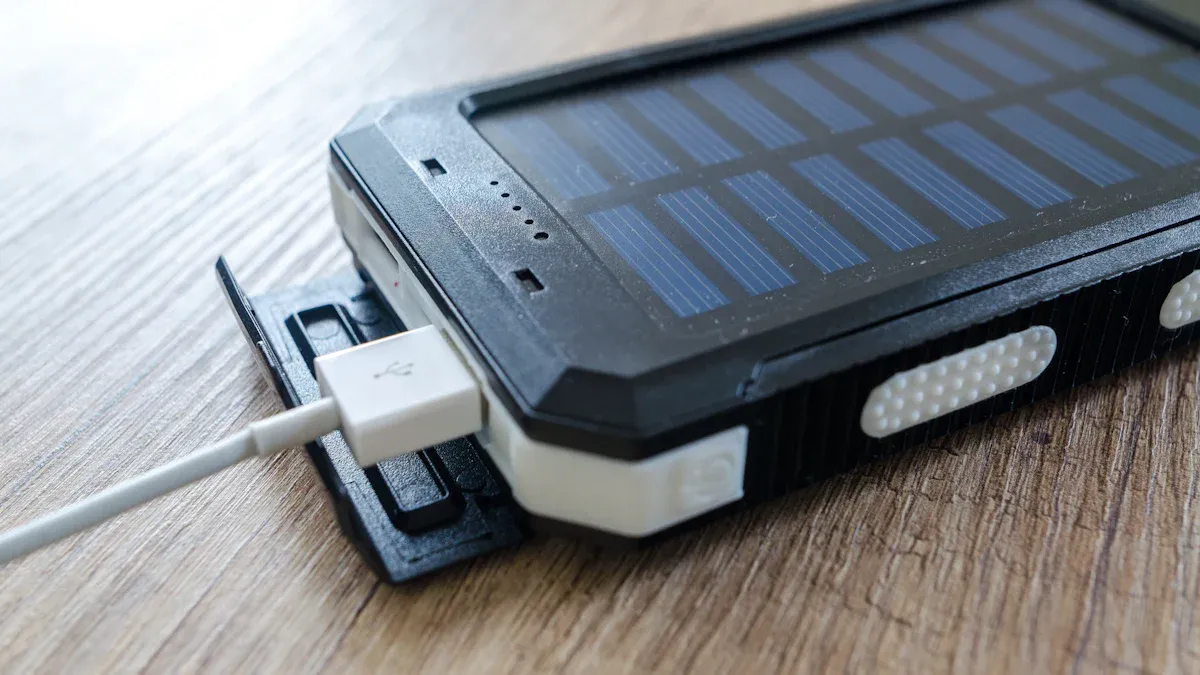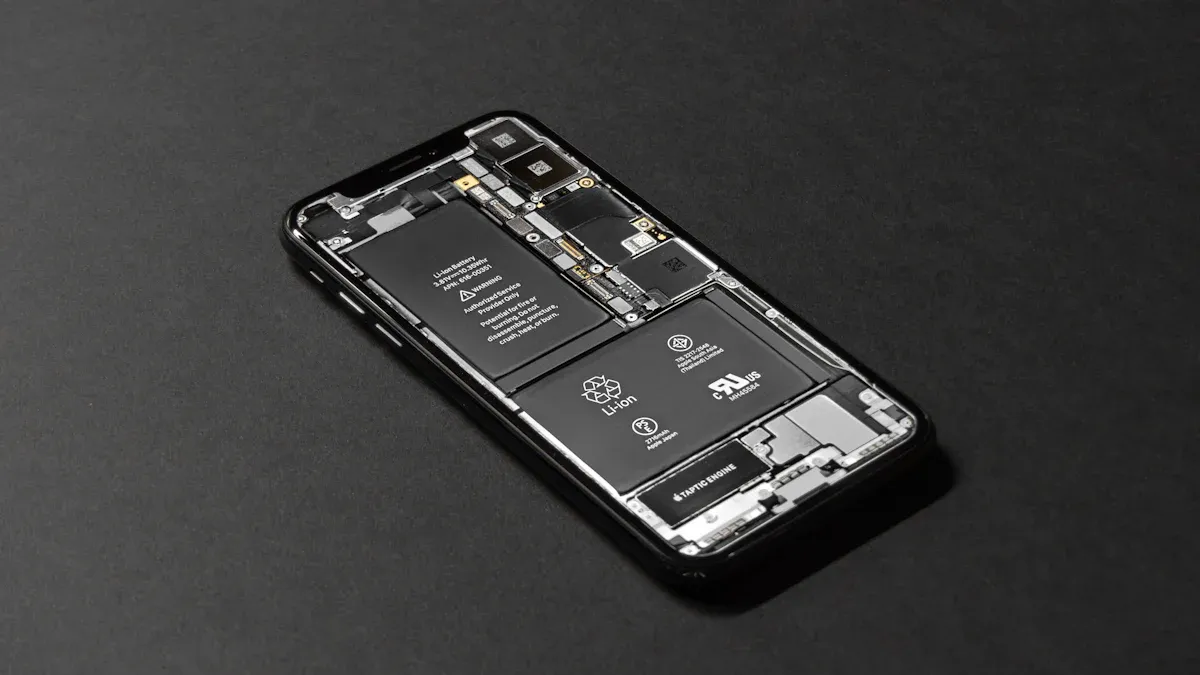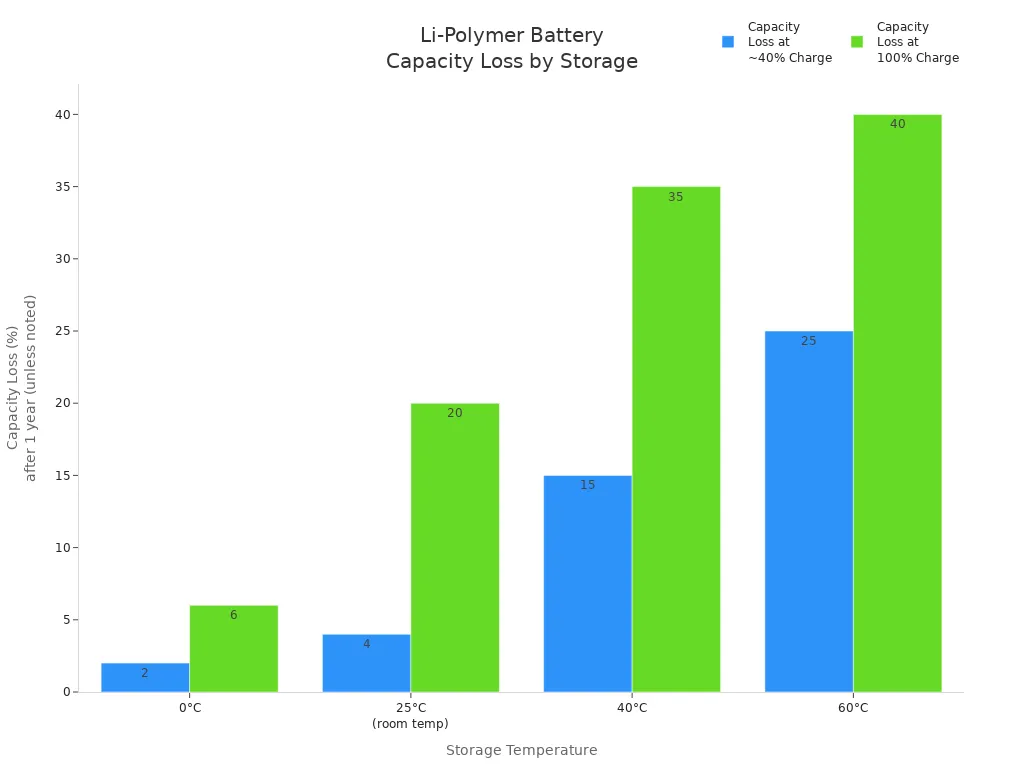
Imagine your medical devices or smartphones suddenly stop working because you picked the wrong battery. When you choose a smart li-polymer battery, you must match voltage, capacity, size, and safety features to your device’s needs. This choice keeps your medical devices running safely and helps them last longer.
Studies show that proper battery selection involves:
- Checking capacity and voltage for each medical device.
- Using advanced safety systems to prevent risks like overheating.
- Relying on smart li-polymer battery features to monitor battery health and extend performance.
A smart li-polymer battery with the right safety and management systems protects medical devices, prevents failure, and supports better performance.
Power Needs

Choosing the right lithium polymer battery for your portable device starts with understanding its power requirements. You need to match the battery voltage, capacity, and discharge rate to your device’s needs. This ensures safe operation, reliable performance, and long-lasting use.
Tension et capacité
You must always check the battery voltage before installing a new lithium polymer battery. Most portable devices use a single cell with a nominal battery voltage of 3.7V. Some devices need higher voltages, which you can achieve by connecting cells in series. For example, two cells in series provide 7.4V, while three cells give 11.1V. The table below shows common configurations:
| Cell Configuration | Tension nominale (V) | Full Charge Voltage (V) | Discharge Cut-off Voltage (V) |
|---|---|---|---|
| Single Cell (1S) | 3.7 | 4.2 | 3.0 – 3.3 |
| Two Cells (2S) | 7.4 | 8.4 | 6.0 |
| Three Cells (3S) | 11.1 | 12.6 | 9.0 |
If you use a lithium polymer battery with the wrong voltage, your device may not turn on or could suffer permanent damage. Overcharging or overdischarging a battery can also cause overheating, swelling, or even fire. Always keep the battery voltage within the recommended range for your device.
Capacity tells you how much energy the battery can store. You measure capacity in milliamp-hours (mAh). Lithium polymer batteries come in many capacities, from as low as 5mAh up to 10,000mAh. For example, you might find a 3.7V, 570mAh battery in a fitness tracker, while a tablet may use a 4000mAh or higher battery. Devices with high capacity batteries last longer between charges, which is important for portable use.
Conseil : Always match the battery capacity to your device’s expected runtime. If you choose a battery with too little capacity, your device will run out of power quickly. Too much capacity can add unnecessary weight and may not fit your device.
Taux de décharge
The discharge rate shows how quickly a lithium polymer battery can deliver power. You often see this as a C-rating. For example, a 1000mAh battery with a 10C rating can safely provide 10A of current. High-drain devices, like drones or power tools, may need batteries with C-rates from 5C up to 60C.
To find the right discharge rate, follow these steps:
- Check your device’s maximum current draw.
- Convert the battery’s capacity from mAh to Ah (divide by 1000).
- Multiply the capacity by the C-rating to get the maximum safe current.
- Make sure the battery’s continuous discharge rate meets or exceeds your device’s needs.
- Add a safety margin of 20-30% above your calculated minimum.
If you use a battery with a discharge rate that is too low, it can overheat, swell, or even catch fire. Always choose a lithium polymer battery that matches or exceeds your device’s discharge needs.
Device Requirements
Manufacturers list battery requirements in product manuals. You will see specifications for battery voltage, capacity, discharge current, and sometimes weight. These details help you pick the right lithium polymer battery for your portable device.
| Specification Type | Description | Purpose in Product Documentation |
|---|---|---|
| Capacité nominale | The typical amount of charge a battery can hold (usually in Ah or Wh) | Defines expected energy storage for device operation |
| Discharge Currents (C-rate) | Rate of discharge normalized to battery capacity | Specifies safe operating current limits to avoid damage |
| Cycle de vie | Number of charge/discharge cycles before capacity degrades significantly | Indicates battery longevity and replacement intervals |
| Specific Energy & Power | Energy and power per unit weight or volume | Helps in selecting batteries for weight-sensitive or power-demanding devices |
You should always use a lithium polymer battery that matches the manufacturer’s recommendations. If you mismatch voltage or capacity, you risk damaging your device or reducing its performance. For example, using a battery with a higher voltage than specified can cause overheating, while a lower voltage may not power the device at all. Matching capacity ensures balanced charging and discharging, which keeps your battery healthy and extends its life.
Lithium polymer battery technology stands out for its high energy density and lightweight design. This makes it perfect for portable devices like smartphones, tablets, wearables, drones, and medical equipment. These devices need batteries that are compact, light in weight, and able to deliver reliable performance over many cycles. The flexible shape of a lithium polymer battery also allows manufacturers to design thinner and lighter products.
Remarque : Always choose a durable lithium polymer battery for devices that need to be both portable and long-lasting. This ensures you get the best balance of weight, high capacity, and performance.
When you select a lithium polymer battery, you support your device’s power requirements, keep the weight low, and ensure safe, reliable operation. This careful matching leads to better performance, longer battery life, and a safer portable experience.
Compatibilité
Size and Shape
When you choose a lithium polymer battery for portable medical devices or smartphones, you must check the size and shape first. Most portable devices use ultra-thin batteries. Industry standards show that many smartphones and wearable medical devices use batteries under 3 mm thick. Some wearables even use batteries less than 1 mm thick. These thin batteries help keep the weight low and make the device comfortable to use.
| Type de batterie | Typical Shape | Size Characteristics | Applications courantes | Caractéristiques principales |
|---|---|---|---|---|
| Pochette (LiPo) | Flexible pouch | Customizable, lightweight, flexible | Wearables, smartphones, medical devices | Lightweight, flexible, customizable |
A lithium polymer battery with a flexible pouch design can fit into many shapes. This flexibility lets manufacturers create portable devices that are small, light, and easy to carry. You should always measure the battery compartment in your device before buying a new battery. If the battery is too thick or the wrong shape, it will not fit, and you may damage your device.
Miniaturization of batteries allows for smaller, lighter, and more discreet portable devices. This improves comfort and makes it easier to use wearable medical devices for long periods.
Type de connecteur
You must also check the connector type when selecting a lithium polymer battery. The connector links the battery to your device’s power system. Different devices use different connectors based on their power needs and size.
- XT60 and XT90 connectors work well for high-power portable medical devices.
- JST connectors are common in small, low-power devices like fitness trackers.
- PH 2.0 and Molex Picoblade connectors fit compact electronics and lightweight portable devices.
- Many lithium polymer batteries use two connectors: one for power and one for balancing the cells during charging.
Choosing the right connector ensures a secure fit and safe operation. If you use the wrong connector, you risk poor contact, power loss, or even safety hazards.
Fit for Device
To make sure your lithium polymer battery fits your portable device, follow these steps:
- Measure the battery compartment in your device.
- Check the shape and thickness of the battery.
- Match the connector type to your device’s socket.
- Test the battery in the device before final assembly.
- Make sure all connections are secure and insulated to prevent short circuits.
A good fit keeps the weight balanced and helps your device work safely. For portable and wearable medical devices, a secure fit also means better comfort and longer use. If the battery is too heavy or does not fit well, it can cause discomfort or device failure.
Tip: Always test the lithium polymer battery in your device before final use. This helps you avoid problems with weight, fit, or connection.
Smart Li-Polymer Battery Features

BMS and Cell Balancing
A smart li-polymer battery uses a battery management system (BMS) to keep your device safe and reliable. The BMS checks voltage, current, and temperature all the time. It keeps the battery within a safe range and stops problems like overheating or early aging. You get longer battery life because the BMS balances each cell’s charge. This means no cell gets too weak or too strong, so your battery ages evenly. The BMS also manages heat, keeping the battery at the best temperature for performance. If something goes wrong, like a short circuit or too much current, the BMS shuts down the battery to prevent damage. You also benefit from better capacity and longer use because the BMS manages charging and discharging limits. The BMS collects data and talks to digital systems, so you can check battery health and get alerts if something needs attention.
Cell balancing is very important in a smart li-polymer battery. The BMS makes sure each cell has the same charge. This stops some cells from overcharging or draining too much, which can cause safety risks or shorten battery life. Advanced balancing uses special circuits to move energy between cells, keeping everything even. This helps your battery last longer and work better, even after many charging cycles.
Safety Protections
You want your smart li-polymer battery to be safe. High-quality batteries go through strict checks, like x-ray tests, to find any hidden problems. Clean rooms keep out dust and metal bits that could cause shorts. Built-in protection features include strong separators and digital circuits that stop overcharging, overheating, and short circuits. These protections work together to keep your battery safe during normal use. Even though rare failures can happen, the chance is very low—less than one in ten million for top brands. Certified batteries from trusted brands give you more safety and fewer problems. Always store and use your battery the right way to keep it safe.
Tip: Never use a damaged battery or charge it in extreme cold. This helps prevent failures and keeps your device safe.
Smart Functions
Smart functions make your smart li-polymer battery even better. You can see real-time battery data on your digital device without opening anything. The battery sends alerts if it gets too hot or the charge drops too low. These alerts help you avoid unsafe situations. Smart batteries use sensors to watch temperature, voltage, and current. If the battery gets too hot, it shuts down to stop damage. You get accurate battery life estimates, so you know when to recharge. The BMS adjusts charging based on the environment, which helps your battery last longer and stay safe. Digital monitoring lets you keep your battery healthy and enjoy fast charging times without worry.
Quality and Value
Brand and Certification
When you choose batteries for medical devices, always look for trusted brands. Brands like Murata, Ufine Battery, and EEBM Battery have strong reputations for reliability and safety. These companies use advanced technology and strict testing to make sure their batteries work well in portable medical devices. You should check for important certifications. The KC certification is a key mark for safety standards, especially for smart Li-Polymer batteries in wearables. This certification means the battery meets strict safety and quality rules. Other certifications, such as UL, CE, and IEC, show that the battery passed tough tests for safety, environmental impact, and performance. Certified batteries often last longer and work better, giving you peace of mind.
| Brand | Origin | Key Reliability Features | Certifications and Safety Features |
|---|---|---|---|
| Murata | Japon | Advanced technology, global leader, multiple sites | High safety standards |
| Ufine Battery | China | Long cycle life, high energy, multiple protections | Many safety and quality certifications |
| EEBM Battery | China | High discharge rate, pre-tested, reliable | Rigorous testing, minimal failure |
Tip: Always read customer reviews and check for certifications before buying batteries for medical devices. This helps you avoid low-quality products.
Shelf Life and Storage
Smart Li-Polymer batteries can last for years if you store them the right way. You should keep batteries at about 50% charge (3.6 to 3.8 volts) and at room temperature. This helps reduce capacity loss and keeps the battery safe for medical devices. If you store batteries fully charged or fully discharged, you risk damaging them. Deep discharge can make a battery unsafe and unable to recharge. High temperatures speed up capacity loss and can cause safety problems. Always follow recommended safety guidelines for storage. Use fireproof containers and keep batteries away from heat and sharp objects. If you see any damage, remove the battery and store it safely until you can dispose of it.
| Température de stockage | Capacity Loss at ~40% Charge | Capacity Loss at 100% Charge |
|---|---|---|
| 0°C | ~2% after 1 year | ~6% after 1 year |
| 25°C (room temp) | ~4% after 1 year | ~20% after 1 year |
| 40°C | ~15% after 1 year | ~35% after 1 year |
| 60°C | ~25% after 1 year | ~40% after 3 months |

Note: Proper storage extends battery life and keeps your portable medical devices safe.
Recycling batteries helps protect the environment. Up to 95% of valuable metals can be recovered from used batteries. Recycling reduces CO₂ emissions and supports a stable supply of materials for new batteries. Always recycle old batteries at approved centers.
Cost vs. Performance
You may notice that high-quality smart Li-Polymer batteries cost more than cheaper options. However, these batteries give you better reliability, longer cycle life, and improved safety for medical devices. High-quality batteries can last 1500 to 2000 cycles, while lower-cost types may only last 500 to 1000 cycles. This means you replace batteries less often, saving money over time. High-quality batteries also offer better energy density and support fast charging, which is important for portable medical devices that need long-lasting power.
| Aspect | High-Quality Li-Polymer Batteries | Lower-Cost Alternatives |
|---|---|---|
| Lifespan (Charge Cycles) | 1500-2000 cycles | 500-1000 cycles |
| Densité énergétique | 300-400 Wh/kg | 150-250 Wh/kg |
| Sécurité | Very low accident rate | Higher risk of overheating |
| Maintenance | Less frequent replacement | More frequent replacement |
| Coût | Higher upfront | Lower upfront |
When you balance cost and performance, think about the total value over the battery’s life. Medical-grade batteries may cost more, but they give you the reliability and safety needed for medical devices. Always follow guidelines for choosing batteries that meet safety standards and offer long-lasting power.
You can find the right smart Li-Polymer battery by following these steps:
- Match your device’s power needs, size, and form factor.
- Check compatibility and connector type.
- Choose batteries with smart features and strong safety protections.
- Compare quality, certifications, and value.
Careful battery selection lowers the risk of device failure and keeps you safe. Trusted retailers like 18650BatteryStore.com offer authentic batteries with long cycle life and strong support. Always double-check your device’s specs and choose batteries that meet every cycle and safety need. This helps your device work well through every cycle and extends its cycle life.
FAQ
What makes a battery “smart”?
A smart battery has a built-in management system. This system monitors voltage, temperature, and charge. You get alerts for problems. The battery protects itself from overcharging and overheating.
Can you use any Li-Polymer battery in your device?
No, you must match voltage, capacity, size, and connector type. Using the wrong battery can damage your device or cause safety risks. Always check your device’s manual for the correct specifications.
How do you store a Li-Polymer battery safely?
Store your battery at room temperature. Keep it at about 50% charge. Use a fireproof container. Avoid heat, moisture, and sharp objects. Check for damage before storing.
How do you know when to replace your battery?
You should replace your battery if you notice swelling, overheating, or a big drop in runtime. Devices may also show warning messages. Always use a new battery that matches your device’s requirements.

